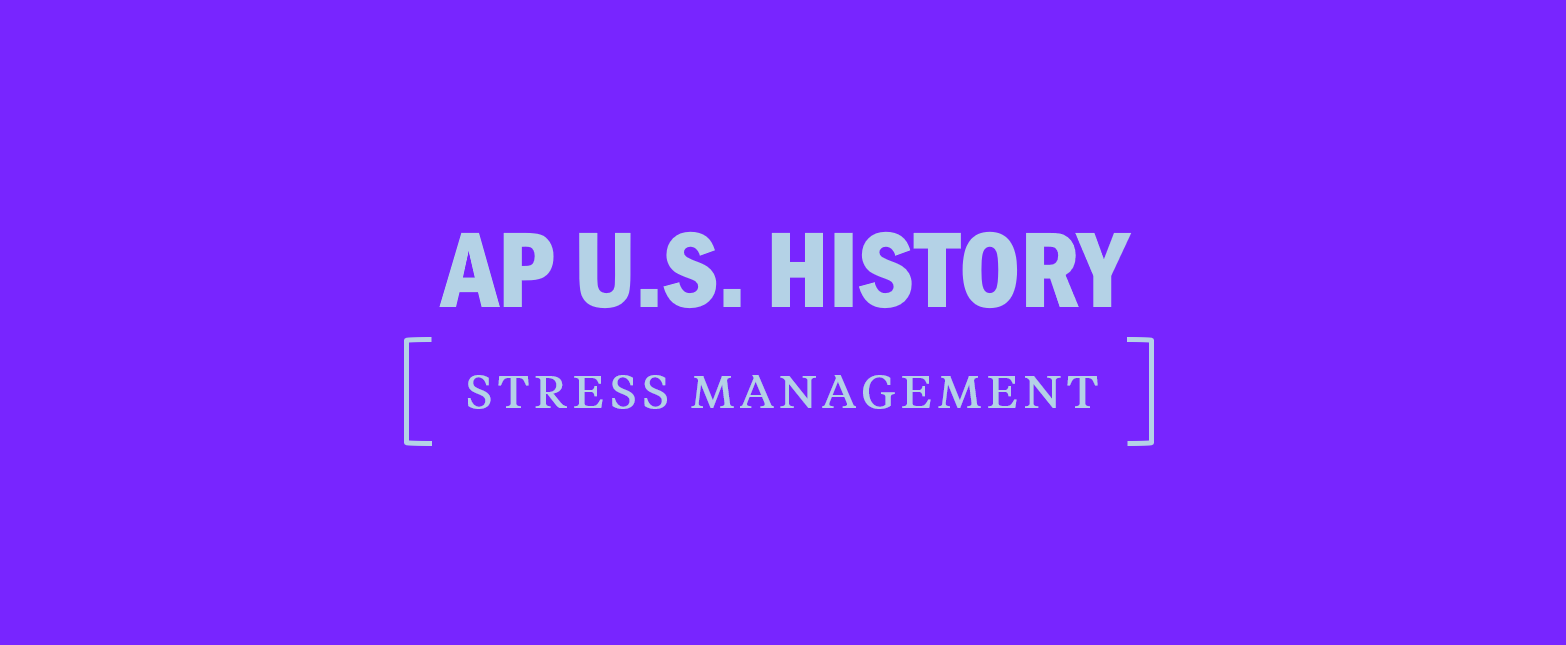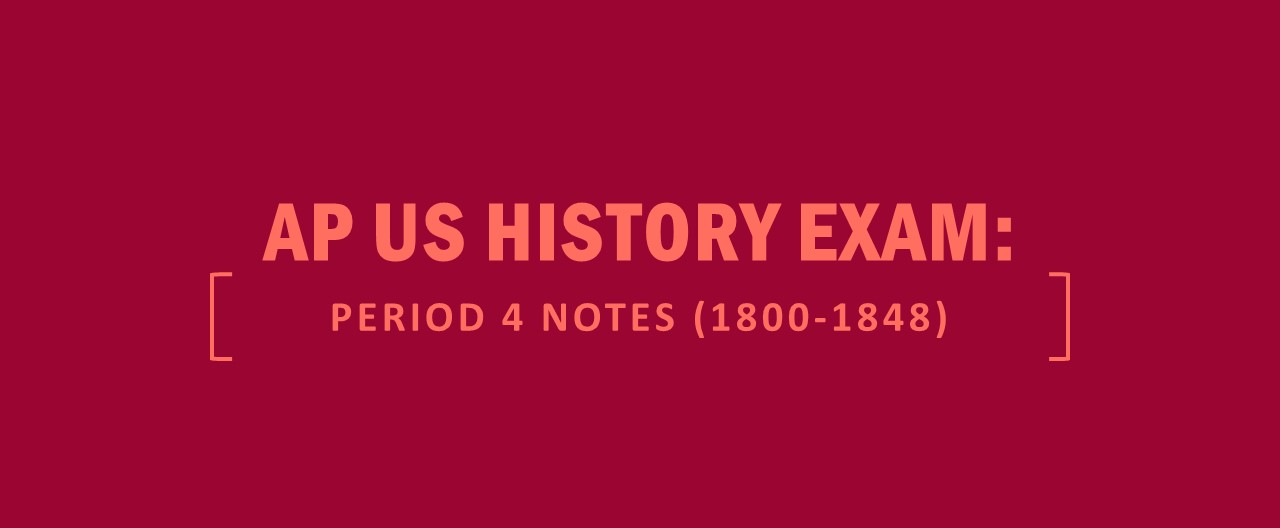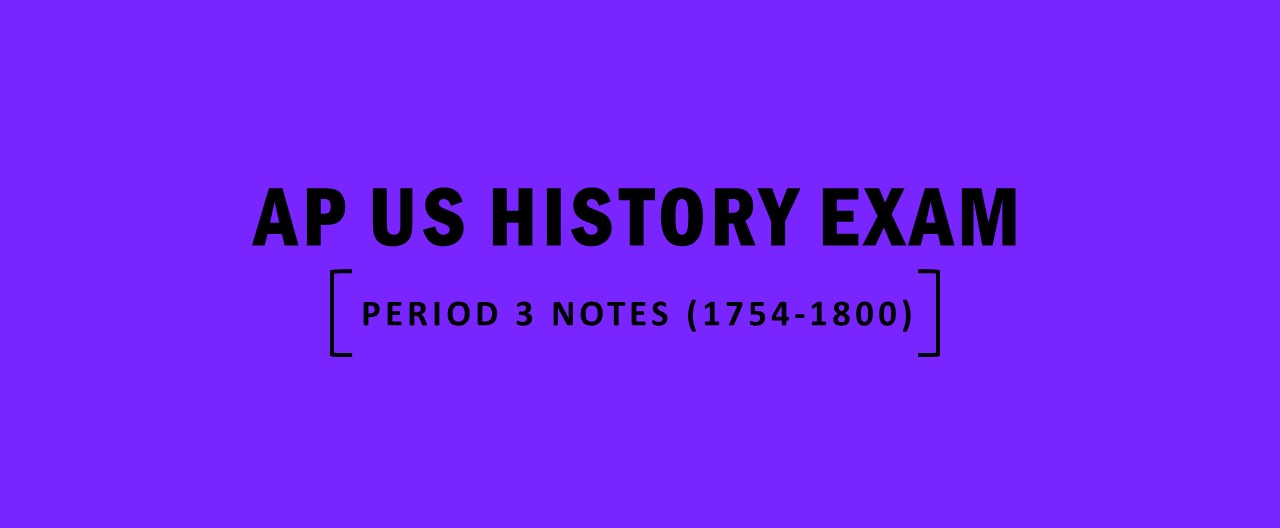AP U.S. History Stress Management
You can beat anxiety the same way you can beat the AP U.S. History exam—by knowing what to expect beforehand and developing strategies to deal with it.
Sources of Stress
Take a few minutes to think about what your sources of test-related stress are. The idea is to pin down any sources of anxiety so you can deal with them one by one. Here are some common examples— feel free to use them and any others you think of.
- I always freeze up on tests.
- I’m nervous about the DBQ.
- I need a good/great score to get into my first-choice college.
- My older brother/sister/best friend/girlfriend/boyfriend did really well. I must match their scores or do better.
- My parents, who are paying for school, will be quite disappointed if I don’t do well.
- I’m afraid of losing my focus and concentration.
- I’m afraid I’m not spending enough time preparing.
- I study like crazy, but nothing seems to stick in my mind.
- I always run out of time and get panicky.
- The simple act of thinking, for me, is like wading through refrigerated honey.
- I have too many AP exams in one week.
Chances are, the top of the list is a fairly accurate description of exactly how you react to test anxiety, both physically and mentally. The later items usually describe your fears (disappointing mom and dad, looking bad, etc.). Taking care of the major items from the top of the list should go a long way toward relieving overall test anxiety.
Strengths and Weaknesses
Take 60 seconds to list the areas of U.S. history that you are good at. They can be general, such as “colonialism,” or specific, such as “foreign policy in the 1930s.” Put down as many as you can think of and, if possible, time yourself. Write for the entire time; don’t stop writing until you’ve reached the one-minute stopping point.
After you think about all your strengths, take 60 seconds to write down the areas of U.S. history that you struggle with or do not understand.
Taking stock of your assets and liabilities lets you know the areas you don’t have to worry about and the ones that will demand extra attention and effort. It helps a lot to find out where you need to spend extra effort. We mostly fear what we don’t know and are probably afraid to face. You can’t help feeling more confident when you know you’re actively strengthening your chances of earning a higher overall score.
Now, go back to the “good” list and expand on it for two minutes. Take the general items on that first list and make them more specific; take the specific items and expand them into more general conclusions. Naturally, if anything new comes to mind, jot it down. Focus all of your attention and effort on your strengths. Don’t underestimate yourself or your abilities. Give yourself full credit. At the same time, don’t list strengths you don’t really have.
Expanding from general to specific might go as follows: if you listed “politics” as a broad topic you feel strong in, you would then narrow your focus to include areas of this subject about which you are particularly knowledgeable. Your areas of strength might include specific presidencies, legislative acts, Supreme Court decisions, etc. Whatever you know well goes on your “good” list.
Did you find yourself going beyond the two minutes allotted? Did you write down more things than you thought you knew? Is it possible you know more than you’ve given yourself credit for? Could that mean you’ve found a number of areas in which you feel strong?
You just took an active step toward helping yourself. Enjoy your increased feelings of confidence and use them when you take the AP U.S. History exam.
Another way to relieve stress is through progressive relaxation. For example, when you’re sitting at your desk, clench your fists tightly for about five seconds, then unclench them slowly and feel the tension disappear.
RELAAAAAAAX
Sit in a comfortable chair in a quiet setting. If you wear glasses, take them off. Close your eyes and breathe in a deep, satisfying breath of air. Really fill your lungs until your rib cage is fully expanded and you can’t take in any more. Then, exhale the air completely. Imagine you’re blowing out a candle with your last little puff of air. Do this two or three more times, filling your lungs to their maximum and emptying them totally. Keep your eyes closed, comfortably but not tightly. Let your body sink deeper into the chair as you become even more comfortable.
With your eyes shut, you can notice something very interesting. You’re no longer dealing with the worrisome stuff going on in the world outside of you. Now you can concentrate on what happens inside you. The more you recognize your own physical reactions to stress and anxiety, the more you can do about them. You may not realize it, but you’ve begun to regain a sense of being in control.
Let images begin to form on TV screens on the back of your eyelids. Allow the images to come easily and naturally; don’t force them. Visualize a relaxing situation. It might be in a special place you’ve visited before or one you’ve read about. It can be a fictional location that you create in your imagination, but a real-life memory of a place or situation you know is usually better. Make it as detailed as possible and notice as much as you can.
Stay focused on the images as you sink farther into your chair. Breathe easily and naturally. You might have the sensations of any stress or tension draining from your muscles and flowing downward, out your feet and away from you.
Take a moment to check how you’re feeling. Notice how comfortable you’ve become. Imagine how much easier it would be if you could take the test feeling this relaxed and in this state of ease. You’ve coupled the images of your special place with sensations of comfort and relaxation. You’ve also found a way to become relaxed simply by visualizing your own safe, special place.
Close your eyes and start remembering a real-life situation in which you did well on a test. If you can’t come up with one, remember a situation in which you did something that you were really proud of—a genuine accomplishment. Make the memory as detailed as possible. Think about the sights, the sounds, the smells, even the tastes associated with this remembered experience. Remember how confident you felt as you accomplished your goal. Now start thinking about the AP U.S. History exam. Keep your thoughts and feelings in line with that prior, successful experience. Don’t make comparisons between them. Just imagine taking the upcoming test with the same feelings of confidence and relaxed control.
This exercise is a great way to bring the test down to earth. You should practice this exercise often, especially when you feel burned out on test preparation. The more you practice it, the more effective the exercise will be for you.






